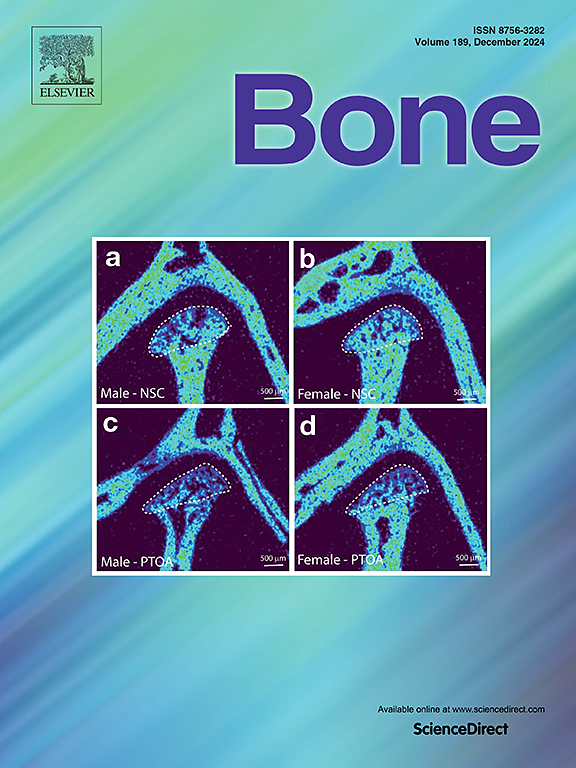Clinical characteristics of patients with bone marrow edema syndrome, transient osteoporosis or migratory osteoporosis: a scoping review
IF 3.6
2区 医学
Q2 ENDOCRINOLOGY & METABOLISM
引用次数: 0
Abstract
Bone marrow edema syndrome (BMES), transient osteoporosis of the hip (TOH), and regional migratory osteoporosis (RMO), along with numerous variants of these terms, are used inconsistently to describe spontaneous pain, typically in the lower extremity, accompanied by bone marrow edema on MRI and/or bone demineralization. In the present review, we aimed to determine whether these designations represent distinct conditions or varying manifestations of a shared pathology. We employed a scoping review methodology, following a preregistered protocol, utilizing a comprehensive systematic search of electronic databases. Eligible publications reported on patients designated with BMES, TOH, RMO, or related terms. A total of 2924 patients, across 561 studies, were included. Data extraction focused on demographics, clinical features and imaging results. Descriptive statistics and meta-analytic methods were used to synthesize the data. Our results show that patients described by terms related to bone marrow edema syndrome, or transient or migratory osteoporosis, displayed similar demographic and clinical profiles. Our findings strongly suggest that these various designations refer to the same clinical entity. Bone marrow edema syndrome appears to be the most suitable term to describe this condition, facilitating a more standardized approach to future diagnosis, management and research.
骨髓水肿综合征、短暂性骨质疏松或迁移性骨质疏松患者的临床特征:范围综述
骨髓水肿综合征(BMES)、髋关节短暂性骨质疏松症(TOH)和区域性迁移性骨质疏松症(RMO),以及这些术语的许多变体,被不一致地用于描述自发性疼痛,通常发生在下肢,MRI显示伴有骨髓水肿和/或骨脱矿。在目前的回顾中,我们的目的是确定这些名称是否代表不同的条件或共同病理的不同表现。我们采用了范围审查方法,遵循预先注册的协议,利用电子数据库的全面系统搜索。符合条件的出版物报道了指定为BMES, TOH, RMO或相关术语的患者。561项研究共纳入2924名患者。数据提取侧重于人口统计学、临床特征和影像学结果。采用描述性统计和元分析方法对数据进行综合分析。我们的研究结果表明,与骨髓水肿综合征或短暂或迁移性骨质疏松症相关的术语描述的患者显示出相似的人口统计学和临床概况。我们的研究结果强烈表明,这些不同的名称指的是相同的临床实体。骨髓水肿综合征似乎是最适合描述这种情况的术语,促进了未来诊断、管理和研究的更标准化的方法。
本文章由计算机程序翻译,如有差异,请以英文原文为准。
求助全文
约1分钟内获得全文
求助全文
来源期刊

Bone
医学-内分泌学与代谢
CiteScore
8.90
自引率
4.90%
发文量
264
审稿时长
30 days
期刊介绍:
BONE is an interdisciplinary forum for the rapid publication of original articles and reviews on basic, translational, and clinical aspects of bone and mineral metabolism. The Journal also encourages submissions related to interactions of bone with other organ systems, including cartilage, endocrine, muscle, fat, neural, vascular, gastrointestinal, hematopoietic, and immune systems. Particular attention is placed on the application of experimental studies to clinical practice.
 求助内容:
求助内容: 应助结果提醒方式:
应助结果提醒方式:


